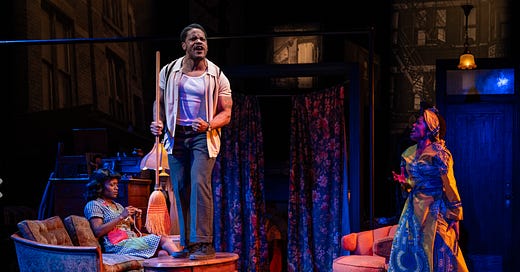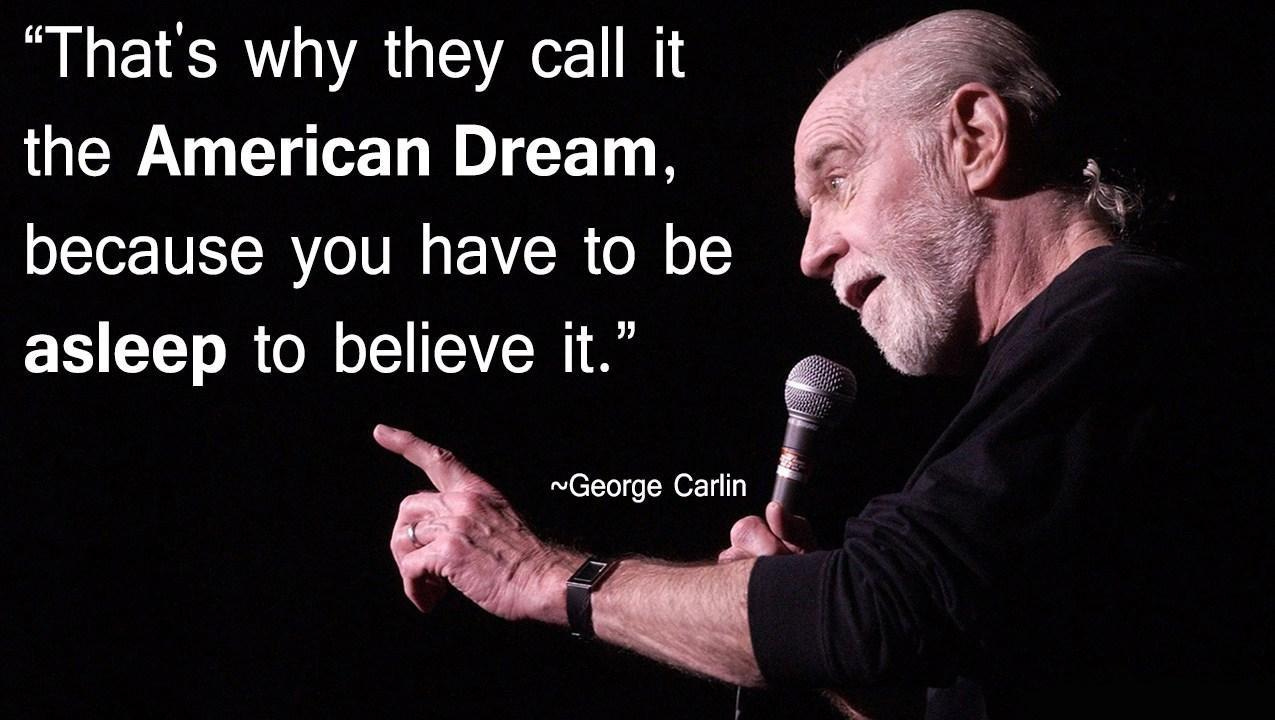A Raisin in the Sun 💛💛💛💛
A review of Court Theatre's production 03.12.25 and the broader mirror of the relationships between the theatre, the university, the neighborhood, the author, politics, and Americanness
In another lifetime, I was a theatre maker and even reviewed performances for two separate publications (which explains some of the writings here dated prior to my entering the Substackiverse.) I will occasionally be publishing a review of a performance I saw that is notable for one reason or another. If you are an organization seeking to add me to your press contact list, please email me directly. For anyone else wishing to skip these posts, I will tag them under “reviews” and will include this preamble at the top for easy opt-out. For an at-a-glance rating view, I’ll include an “out of seven” 💛 scale.
To be quite frank, I thought I’d be writing a simple theatre review for A Raisin in the Sun at Court Theatre, but I’ve been astounded at the overwhelming amount of historical and sociological fascia between the micro of the geographical entanglements of this story and the macro of America and the American life that I am compelled to impart it to you and you can make out of it what you will.
I’ll still offer my theatrical criticism of the play since that was the original intention, but it’s important to note that no play exists in a vacuum. The context might be everything. So, let’s get into some context.
This might ruffle some feathers, but I promise you, it’s an equal opportunity ruffelry (not a real word, I know, but it should be.)
The author of Raisin in the Sun is Lorraine Hansberry, born in a middle-class black family that lived on the South Side of Chicago in a neighborhood called Woodlawn. Woodlawn and Hyde Park are also home to The Court Theatre and its big, important umbrella that goes by the name of The University of Chicago (UChicago). Recently, UChicago has been criticized for its Employment-Assisted Housing Program (EAHP), which grants UChicago employees up to $10,000 toward a down payment on a house in Woodlawn. The majority of UChicago employees eligible for this grant are white, but the neighborhood isn’t. The local residents are getting priced out, and the University is being accused of “laissez-faire racism,” which allows the market to dictate the redline. Let’s put a pin on that.
Hansberry’s parents were both Republicans; her mother served as a committee person, and her father was in real estate, aggressively promoting a type of living quarters called a “kitchenette,” in which 4 times the regular occupants would be stuffed in unheated roach-infested tiny apartments with shared bathroom and telephone. Her father earned the unfortunate moniker “King of the Kitchenette” due to his accumulation of wealth on the backs of black migrants. This type of apartment is the backdrop to Hansberry’s play, in which she models one of the characters, Beneatha, after herself. The ideology of her Republican father does rear its head through the depiction of the character George, written to appear two-dimensional, shallow, and intellectually inferior. We’ll put a pin on that as well.
Hansberry v. Lee (1940) might ring a bell to some readers who follow law and Supreme Court decisions. Was it? Yes, that Hansberry. The case that was the beginning of the end of redlining real estate. Lorraine’s father, Carl, had a run-in with a restrictive covenant that protected its interests from an “invasion” of people outside of the dominant culture into its Woodlawn neighborhood. Yes, that Woodlawn. Back in the day, the neighborhood was mostly white. In Raisin in the Sun, a man representing a similar association creates racial tension in Hansberry’s work as he comes to dissuade the family from moving into a new house in a white neighborhood. We’ll add a neat little pin here too.
Lorraine was ideologically split from her parents. She was politically active in the Communist Party, and although she married a Jewish man who supported Julius and Ethel Rosenberg, she was most likely gay. In her attempt to bring attention to social justice, she also met and spoke to Bobby Kennedy—yes, that Bobby — but the meeting left her disappointed. But the theatre, to Lorraine, had the promise to bring about action or, as she put it, it had the “energy which could change things.”
As an aside, Carl Hansberry, father of the author, died at the age of 50 while visiting Mexico in looking to see if he should move his family there. Some say he was exhausted fighting racism in Chicago; some would say he was bummed out that he lost a congressional bid, but whatever the reason, that was the last the family ever saw of the patriarch—alleged cause: cerebral hemorrhage. Lorraine Hansberry’s play also begins with the death of its patriarch. The theme of a dream drying out like a raisin in the sun ripples throughout. Lorraine, herself, left this earthly plane at 34. Her good friend James Baldwin wrote that "it is not at all farfetched to suspect that what she saw contributed to the strain which killed her, for the effort to which Lorraine was dedicated is more than enough to kill a man."
For those who have never read or seen Raisin in the Sun, and you trust my opinion, it is a finely written play. Lorraine can write characters pretty darn well, especially women. Her drama features three complicated female characters: Ruth, the docile wife, performed by Kierra Bunch; Beneatha, the fiery intellectual sister, performed by Martasia Jones, and Lena, the powerhouse matriarch, performed by Shanésia Davis. The central male character, Walter Younger, performed by Brian Keys, draws parallels to Willy Loman — these characters in American drama that fall hook, line, and sinker for the American dream, whose chase for it only further exposes their flaws.
Is the American Dream an illusion? It doesn’t have to be. It’s just that there’s a caveat. There’s always a caveat. And if you don’t read the fine print, you end up like Willy Loman or Walter Younger. Incidentally, I’ve often compared America to Willy Loman, a country pretending everything is OK through a forced smile while consciously taking up the small pipe in the garage. Where Walter Younger differs is that when Raisin in the Sun begins, he still believes the American Dream can be achieved at face value.
Highlighting the American Dream even more into focus in Raisin in the Sun was the character Joseph Asagai, a Nigerian student who brings up the theme of “assimilation.” In Raisin, assimilation is a one-way demand: minorities must conform, but the dominant culture need not reciprocate. Does this mirror broader American history, where Black contributions (cultural, economic, moral) are exploited or ignored, yet full citizenship remains elusive? True Americanness, the play argues, accommodates multiplicity rather than demanding a single cultural script. Pin it.
The production I saw was directed well by Gabrielle Randle-Bent, who leaned into the family values and racial tension themes true to the time, although I was confused by some of the sound and costume choices that portrayed different decades, creating a dissonance in my understanding. It was the 50s, and Ruth was pregnant, but now, Beneatha is wearing a hippie outfit, complete with an Afro, while listening to Chaka Khan… are we in 70s already, and where did the baby go? Perhaps the intention was to portray a timeless classic whose issues have persisted through the years. If so, it fell a tad short of implicating its own stomping grounds because, as I mentioned earlier, plays don’t exist in a vacuum. It could have been as simple as adding a frame or two of UIC in the hanging gallery of the set — which, by the way, resonated hard with me; I could look at those photos entirely out of context and still know for sure it’s Chicago.
Perhaps Court Theatre was tied to UChicago’s intellectual ethos of producing European and Americana classical texts; perhaps it was trying to prevent hyper-local resonance (after all, UChicago holds its own complicated role in urban renewal and restrictive covenants. Yes, that UChicago,) but it took Court 65 years to decide to produce this play. According to an interview from 2022 with the Artistic and Executive directors, “[they] responded by doing a departmental audit to see where [they] were as an organization on [their] path to becoming an anti-racist institution.”
I’ve written about this phenomenon before: this rush for the arts, a field known for its inclusion of outcasts and non-conformists throughout the ages, in its attempt to prove it is progressive and self-corrective, begins to adopt an attitude and vision more concerned with optics than with actually fixing the issue. The outcome ends up feeling performative. Clifton Duncan speaks on this more eloquently on his Substack, too.
Industry professionals claim they want to attract an audience that reflects the “real” America, in all its diversity. Such sentiments are hollow at best, for in reality the industry is now dominated by the social vision of a largely white and affluent bourgeoisie—or “Bluegeoisie”—which makes no attempt to hide its sneering contempt for those who do not share its progressive values (which is to say, the majority of the country).
A truly “inclusive” theatre industry would recognize and embrace that the United States is not only a mosaic of different ethnicities, but a nation with a complicated tapestry of views, values, and perspectives which ebb and flow over time. Had theatre industry leaders any knowledge of or respect for the American public it is charged with serving—particularly in an era where one can instantaneously access and survey a broad spectrum of news, views, and opinion to gauge the pulse of the nation—its programming choices would reflect such wisdom.
Instead the American theatre, for all its proclamations of anti-bigotry, are extreme bigots themselves with regard to political philosophy. But even that is only part of the problem: the industry’s woes are exacerbated by having been wholly seized by a cynical, nihilistic ideology, which is more concerned with revolutionary activism and social engineering than with creating timeless works of dramatic art.
Clifton Duncan, How Progressives Killed Theatre
So what is one to make of all this?
Is UChicago simply controlling the perceptions of its actions by greenlighting Court’s theatre production of Raisin in the Sun, gesturing to past sins to distract from present complicity?
But if white audiences and white money prop up black culture and art, then what say does anyone have in that matter?
At the end of the day, it’s gotta be nice that UChicago’s checks don’t bounce and can sustain a large cast, no?
Can America’s promise ever truly extend to all without rewriting the rules of who gets to belong?
Life is messy and complicated. Theatre is messy and complicated. America is messy and complicated.
I write this on the eve of St. Paddy’s Day - arguably the least appealing of all holidays in Chicago. It’s the one where everyone pretends to be Irish so they can drink ‘til they puke. (It’s also, incidentally, the day of Lorraine Hansberry’s father’s death.) The day offers an opportunity to touch upon the theme of “assimilation.”
It is illegal in America to force assimilation. In other countries, homogeneity is the norm. People born here for generations, considered Apple Pie American, would sometimes get their 23andme results and suddenly adopt a symbolic ethnic minority identity. Like Irish, for example. As if being American isn’t enough. But what actual connection can someone have to the Irish ethos if they don’t speak the language, have never been to Ireland, don’t know any of its lore, or even wear a funny hat that might tie in the heritage? This goes for any other minority, by the way, including all of you Wakanda Forever aspirants. Yet, somehow, it is hard to define what is an American as a core demographic of America. Doesn’t anyone find that odd? Largely, it would seem that America is just made up of ethnic minorities, often donning that identity as extractive costumes. Thanks, “progress.”
The paradox is that in keeping ourselves so disparate from one another, we ironically create the division that drives bigotry. “Progress” has just enabled the grafting of DEI buzzwords onto old exploitative frameworks. Progressivism, unchallenged, just becomes another restrictive covenant.
The author of Visceral Adventure believes in the gift economy and therefore offers all content with no paywall, asking you to contribute whatever amount feels good to you. Since value is unique and subjective, only you can decide what (if any) contribution is gifted at this time. All contributions benefit and support my family.
To upgrade to a paid subscription to this stack, click on the button. For a one-time gift, click on this Ko-Fi link. Or if sats is your thing, I have one foot on the BTC exit ramp and you can contribute here:
bc1qlh9r0h5czgp9cv6pzfpmwr7zg30tud7fdrx0dd
As always, thank you for being a part of my journey.










“People born here for generations, considered Apple Pie American, would sometimes get their 23andme results and suddenly adopt a symbolic ethnic minority identity.” Ha. I mean people need to collect their brownie points right? Lotsa good observations in your essay/review, Tonika. (Reminds me of a play I saw here last year… would have perhaps enjoyed it more 5 years ago when I was less aware that certain messages are amplified via arts funding). Plus I keep forgetting to tell you that I love the way you write. 💕
I love how comedy and drama can send a message that normally would be dismissed by the people.
It's not unlike the court jester that was allowed to tell the truth in front of the king, as long as it was "funny".
I've recently been rewatching the later Battlestar Galactica and it feels like an alternate universe where things happened a bit differently, especially technologically. But where it's the same is in matters of the heart! 💜
We are all passengers on a spaceship called Earth. Let's work together and fix things and frak the idiots, morons, and psychos from society, just like native tribes do.
https://robc137.substack.com/p/alphabet-vs-the-goddess